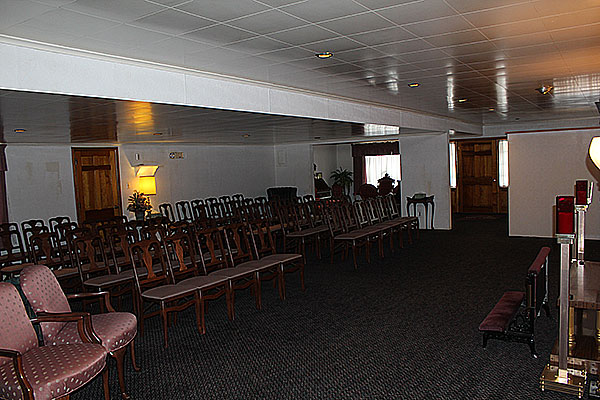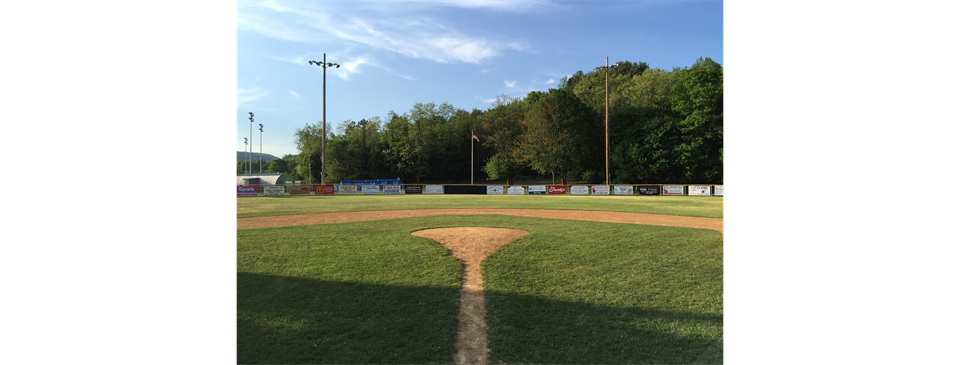SLOVENES Encyclopedia of Cleveland History Case Western Reserve University
Table of Content
- Celebrate Christmas Day at the Maltz Museum with a Tour, Crafts & Food Donations
- SLOVENIAN NATIONAL HOME
- Neighborhoods
- TIMELINE OF SNH
- Cleveland Kurentovanje, Slovenian-infused Mardi Gras carnival, returns to St. Clair-Superior neighborhood
- Virtual Events All Week Lead Up to Live, Outdoor Kurentovanje Festival
The outdoor event will be held at the Slovenian National Home. By 1975 John Terlep proposed an addition (35 ft. x 20 ft. or 12,000 sq. ft.) that would include an addition to expand kitchen facilities, new stage area and expand the main hall and Clubroom floor area. The Clubroom to include a dance area and band stand, and remodel the Clubroom. The Sajovic Construction Company was contracted to build this addition at $65,000. Included in the plans were an expansion to the rear of the building that would include moving the stage back, lower the floor under the present stage in the upper hall, and expand the lower hall beneath the stage.
In 1927 another group was organized named “Adrija.” They performed many plays and concerts, but it, too, was short-lived. This community which still maintained a rural atmosphere was known officially as the Village of Euclid. A group of Cleveland area Slovenians decided to make a trip to the Village of Euclid to discuss the purchase of land in what was then a predominantly farming and grape growing community.
Celebrate Christmas Day at the Maltz Museum with a Tour, Crafts & Food Donations
One, the Partisans, was controlled by the Communist party under Josip Broz Tito. Cleveland Slovenes divided sharply over which of these resistance groups to support. Some opted for the Partisans; they were influenced by Louis Adamic, a nationally prominent Slovene-American writer of the 1930s and 1940s. These Slovenes organized material and moral support for the Partisans and continued their efforts into the postwar years. One result of these efforts was the eventual establishment in Cleveland of an official Yugoslav consulate, which was led by an ethnic Slovene. After the establishment of an independent Slovenia in 1991, its government opened an Honorary Consulate and appointed a local Slovene, Dr. Karl B. Bonutti, honorary consul.

The largest, the SLOVENIAN NATL. HOME on St. Clair Ave., with a seating capacity of more than 1,000, was constructed in 1924. Financed through the sale of shares to Slovene organizations and individuals, operated by boards of trustees elected by the shareholders, the Natl. Homes served as anchors in the settlements, in company with the Roman Catholic national parishes.
SLOVENIAN NATIONAL HOME
For this purchase society members paid a donation of $25 into the hall’s treasury. The purpose was to convert the church quarters into a hall for meetings and other civic and lodge activities. Immediately after title transfer, John Fabec, a bricklayer removed the steeple and front elevation, and erected an addition with a new front entrance. A new basement was made and the members again had to contribute $12 to cover expenses.

CLEVELAND — For the 10th year in a row, Cleveland’s St. Clair-Superior neighborhood will celebrate the week-long Slovenian-infused Mardi Gras celebration known as Cleveland Kurentovanje, which kicks off Feb. 20 and ends Feb. 26. Two years after the addition was built the lower hall and Clubroom were flooded with 8 ft. of water by a horrible rain storm. It was discovered that the main sewer lines were above the floor level of the lower hall causing water to backup into the hall.
Neighborhoods
Event center and hall rentals for weddings, corporate events, holiday celebrations or any special occasion. Located three miles east of downtown Cleveland, we are convenient from both the east and west side. But in the meantime, you can enjoy a series of cultural events online, starting with “Cooking with Cleveland Kurentovanje” on Sunday February 20 @ noon.

Some virtual events are free while others require tickets. In the 1940’s people were making changes in their way of life and the fraternal and cultural groups had lost ground. Members began to bypass sports, social and other events. The Board of Directors appointed a Building Committee to present to its members a request for the need of a new home.
The Slovenian Society Home has hosted many special events. In 1941 there was a magnificent Euclid Slovenian Day in honor of poet, composer and musical director Ivan Zorman and the Home hosted a concert. In 1948 the Euclid Vets hosted President Truman and Frank J. Lausche, Governor of Ohio with programs and exhibits. Another was hosting then candidate for President, Jimmy Carter in September of 1976 along with Howard Metzenbaum, and Dennis Eckart, Ohio House of Representative. In 1977 the Progressive Slovene Women of America hosted a National Conference and Symposium to honor Louis Adamic. Hosted bowling tournament banquets, and Balina tournaments.
Michelle Pušič Ryall will demonstrate Slovenian culinary favorites and registrants will get a list of ingredients in advance so they can cook along with Michelle at home. Cleveland Kurentovanje, a Slovenian celebration of anticipation for spring, was launched in the St. Clair/East 65thStreet area ten years ago. It gradually expanded into a week-long series of events. By the 1990s, the Slovene community in the Cleveland area numbered well over 50,000, although many of these were no longer ethnically conscious. Yet the community vigorously continued supporting literally hundreds of organizations reflecting their ethnic heritage and traditions.
The community continued growing rapidly as children were born, and also due to the arrival of Slovenes from other parts of the country. The fact that Slovenia, as a part of Austria-Hungary, was involved in the war from the beginning intensified interest in foreign affairs within the community, which increased with direct U.S. involvement in 1917. The war years seem to have been a watershed for many of the immigrants, as they came fully to realize the permanence of their commitment to America. One result was an intensification of activity within the community itself. Homes, which would be centers of social and cultural life in the settlements. Efforts began in 1903 but did not succeed until 1919, when 4 such homes were dedicated.
The first officers were Lucija Leskovec, Pres.; Mary Strekal, Vice Pres.; Mrs. Dorothy Zele, Secretary; Mary Misic, Treasurer; and Ursula Rotar, Recording Secretary. The Ladies Auxiliary cooked for many of the affairs held at this hall. In 1959 they started to have fish fries on Fridays and have continued to this past year 2003. This group of women are responsible for modernizing all 3 kitchens, updating equipment and making generous donations. The Board of Directors would have been at a loss without their hard work and dedication to the Slovenian Society Home. A dramatic group was organized on October 18, 1930 under the name of Nasa Zvesda , many members from the former “Adrija” became members.
The home celebrates its past every August at its annual Homecoming Day. Slovenian migrants have built National Homes at the center of their communities wherever they have moved throughout the world. Cleveland's Slovenian National Home is the cultural center for Cleveland's Slovenian community and the largest facility of its type in the United States. Constructed around the old Diemer mansion, the Slovenian National Home has a 1,000-seat auditorium that has been used for educational, social, and recreational events.
By the 1940s, each of the major Cleveland and suburban settlements had its own Natl. St. Vitus, the first Cleveland Slovenian Catholic parish, began in 1893 when the city's Slovenians wanted to attend services in their native language. 61st Street and Glass Avenue, and it is still an active Slovenian parish today. In addition to religious activities, St. Vitus provided the community with social services and cultural events, and it continues, along with the Slovenian National Home, to serve as a central organization for Slovenians today.
Cleveland Kurentovanje, Slovenian-infused Mardi Gras carnival, returns to St. Clair-Superior neighborhood
In order to pay for these improvements, all lodge members began to sell shares in the Home at $10 each, which paid dividends to the shareholders. On January 23, 1925 the Tax Department indicated that there was $571 due in delinquent property taxes dating to the time the property belonged to the former Austria Lodge growing to $854 by February. Financial assistance came from the various lodges, each of which contributed $150 to meet the delinquent taxes and for necessary repairs to the building. With its rich fertile soil, abundance of fresh, clean water and generational expertise, Slovenia has all the necessary elements for excellent winemaking.

Comments
Post a Comment